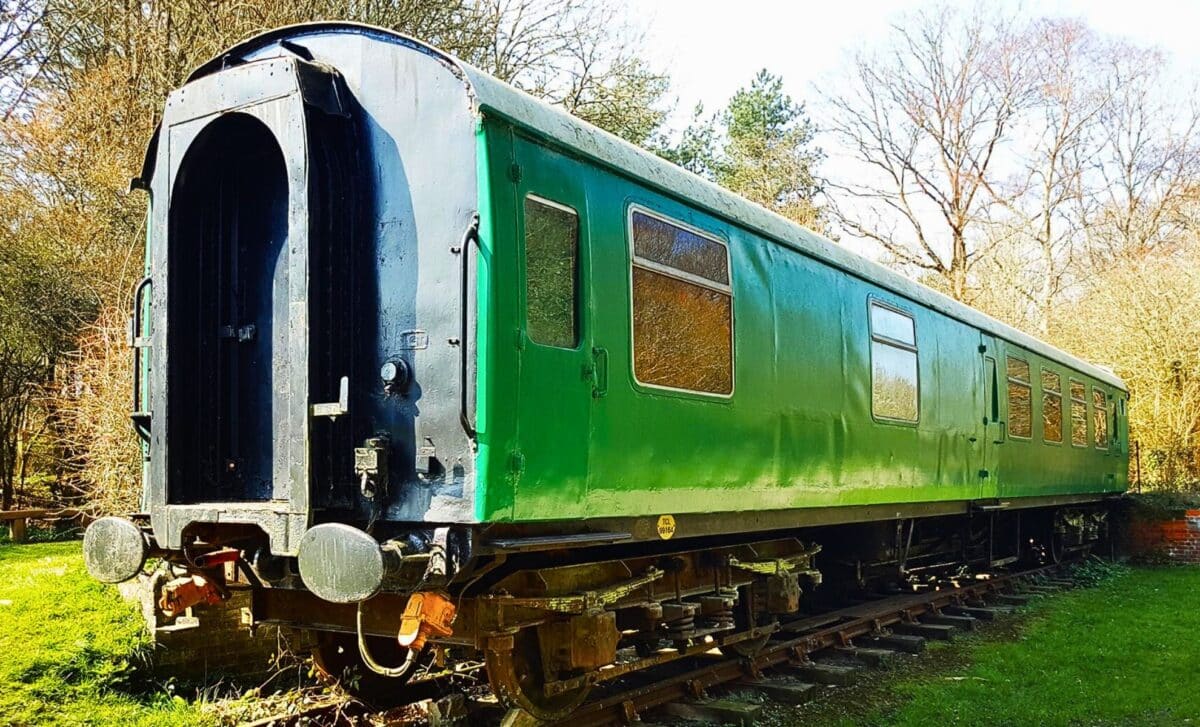Concerns are mounting over the fate of a historic railway carriage situated at the defunct West Grinstead station in West Sussex. This relic, which has been displayed on the old station platform for years, could soon disappear after being declared “surplus to operational requirements” by West Sussex County Council.
This marks a worrying turn for what is considered a symbol of a bygone era, the result of one of the most controversial railway closures in British history: the infamous Beeching Axe. In the 1960s, numerous underused and unprofitable lines were shut down, with West Grinstead station closing as part of this cost-cutting initiative.
Future of Historic Railway Carriage at Risk in West Grinstead
The council is considering several options for the 75-year-old carriage, including selling it or repurposing it for community or social use. The official aim is to “unlock potential for regeneration, social, and environmental benefits”. But this bureaucratic decision doesn’t seem to sit well with local residents, who view the carriage not just as an object but as an integral part of local history.
Locals have voiced their dismay on social media. “Another piece of our heritage being thrown away,” one resident lamented. Others have suggested that the carriage could serve as a rest stop for walkers on the Downs Link path, or simply be preserved as a living piece of history. The council now faces a dilemma: how to balance the needs of the community with the financial and operational constraints it faces?

The Beeching Axe’s Legacy in West Grinstead
The widespread railway closures driven by Lord Beeching in the 1960s left deep scars across many communities. West Grinstead, a small station now closed, is one of the few sites where visible remnants of its railway past still exist, including the old platform.
Today, the former station forms part of the Downs Link, a walking path linking several villages, but its railway history now risks being forgotten. The future of this carriage is symbolic of the broader erosion of this heritage, often seen as too costly to maintain.
Residents’ comments on social media reflect their frustration at what they perceive as a lack of respect for their local history. “This carriage is invaluable to those who know its story. Why do they always take our memories away?” their posts argue.
Their concerns are understandable: as infrastructure evolves and local authorities focus on modernisation, heritage often seems to take a backseat.
A Missed Opportunity for Local Authorities?
This situation raises an important question: do local authorities give enough weight to heritage preservation in less prominent areas? Increasingly, examples show that the management of historical assets isn’t just about physical conservation, but also about community and social value. If the carriage is dismantled, West Grinstead could lose an important part of its identity.
If the council ultimately chooses to sell or demolish the carriage, it could risk not only further alienating the community, but also setting a precedent for future regeneration projects that might erase other local historic elements. The future of railway heritage in West Grinstead is now in the hands of local authorities. But what about the voices of the residents who are asking to be heard?
Unanswered Questions
- How much weight do local communities have in decision-making when it comes to heritage preservation?
- Can the pressure from local communities be enough to preserve historic elements despite financial constraints?
- Could the story of West Grinstead serve as an example for other small communities facing similar dilemmas?









